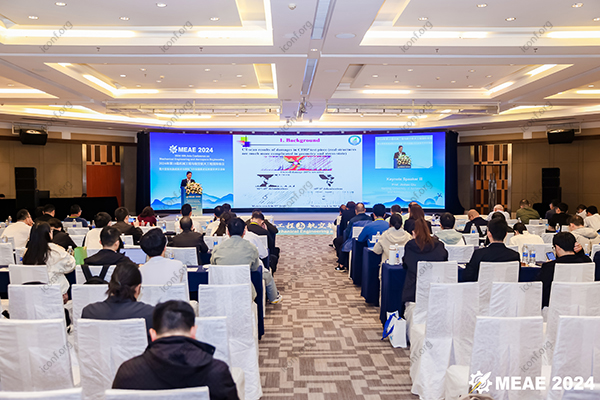In the ever-evolving landscape of computer science and technology, sharing groundbreaking research is essential for driving innovation and shaping the future of digital advancements. Responding to a Call for Papers (CFP) in this field offers a unique opportunity to showcase your work, gain international recognition, and contribute to academic discourse on topics ranging from artificial intelligence and cybersecurity to distributed systems and big data analytics.

Global Exposure
International Reach: Present your pioneering work to a diverse audience of academics, industry leaders, and technology experts.
Academic Prestige: Enhance your scholarly reputation by contributing to high-impact conferences and journals.
Innovation and Impact
Cutting-Edge Research: Share innovative methodologies, novel algorithms, and breakthrough technologies that push the limits of digital transformation.
Real-World Applications: Demonstrate the practical benefits of your research in areas such as cloud computing, data science, cybersecurity, and Internet of Things (IoT).
Networking and Collaboration
Interdisciplinary Exchange: Establish collaborative relationships with experts from related fields to generate new ideas and research projects.
Feedback and Growth: Benefit from constructive peer reviews that refine your work and elevate your academic output.
Thorough Review: Carefully examine the CFP to understand the conference themes and required scope. Ensure your research topic—whether it’s machine learning, software engineering, or high-performance computing—fits the call’s objectives.
Compliance: Follow all formatting rules, citation styles, and submission deadlines precisely to avoid technical rejections.
Clear Summary: Your abstract should concisely outline your research objectives, methods, findings, and contributions. Aim for clarity and brevity.
SEO Integration: Naturally integrate targeted keywords such as “computer science research” and “digital innovation” to boost online discoverability.
Standard Structure: Adopt the IMRaD format (Introduction, Methods, Results, and Discussion) to create a logical and coherent narrative.
Visual Enhancements: Use high-quality graphs, charts, and tables to present complex data and highlight key results.
Innovative Insights: Clearly articulate what makes your research novel and how it advances current technology trends.
Application and Impact: Discuss potential real-world implementations, such as improvements in system performance, enhanced security protocols, or scalable data solutions.
Editing: Utilize professional editing services to polish your manuscript and eliminate grammatical and technical errors.
Peer Feedback: Seek input from colleagues or mentors to fine-tune your submission before finalizing it.
For researchers eager to excel in their CFP submissions for computer science and technology, iconf.org is an invaluable resource. Here’s how it can empower your academic journey:
Curated CFP Listings: Access a centralized database of international computing and technology conference CFPs, saving you time in finding relevant opportunities.
Expert Submission Guidance: Benefit from detailed tips and best practices tailored specifically for computer science research, helping you craft a compelling and competitive paper.
Networking Platforms: Connect with a global community of scholars and industry experts, opening the door to interdisciplinary collaborations.
Comprehensive Academic Resources: Explore high-quality research papers, journals, and datasets that can enhance your manuscript and support your findings.
Responding to a Computer Science and Technologies Call for Papers is a strategic move toward boosting your research impact, gaining international recognition, and fueling digital innovation. By following these best practices—understanding CFP guidelines, crafting an effective abstract, organizing your manuscript methodically, and highlighting originality—you can set your research apart in the competitive global arena.
Elevate your academic journey and drive the future of technology by preparing your CFP submission today. For more resources and expert support, visit iconf.org and join a global network of innovators dedicated to transforming the world through computing research.